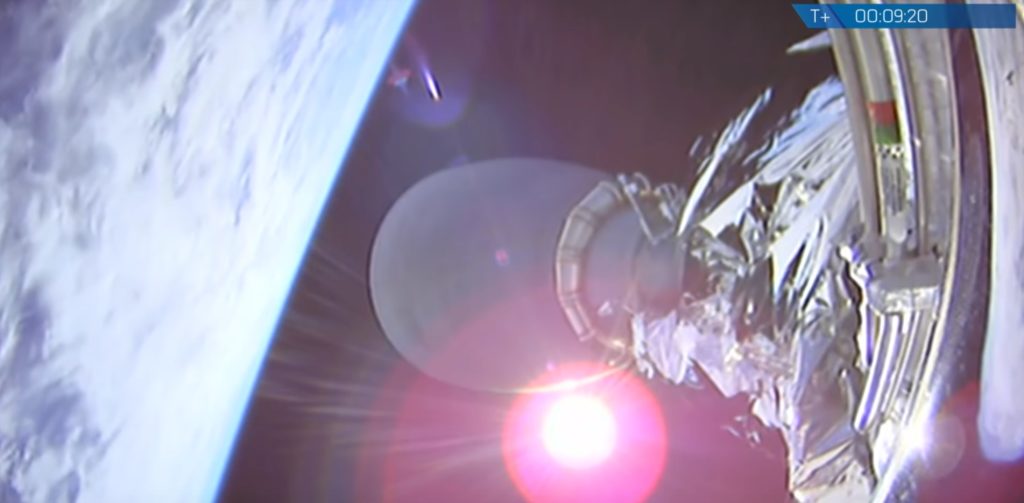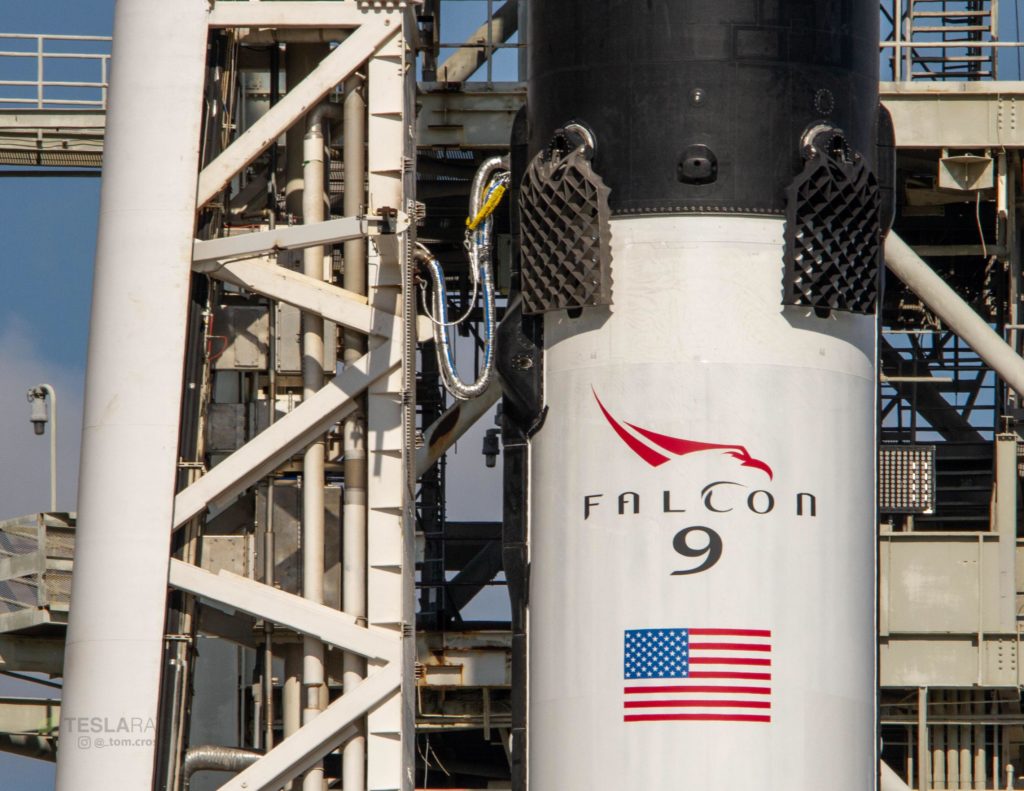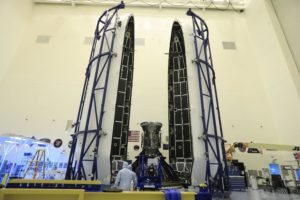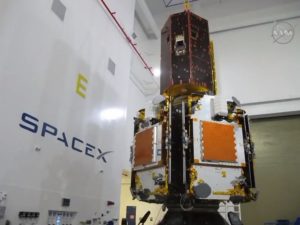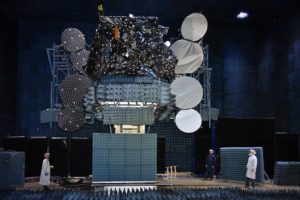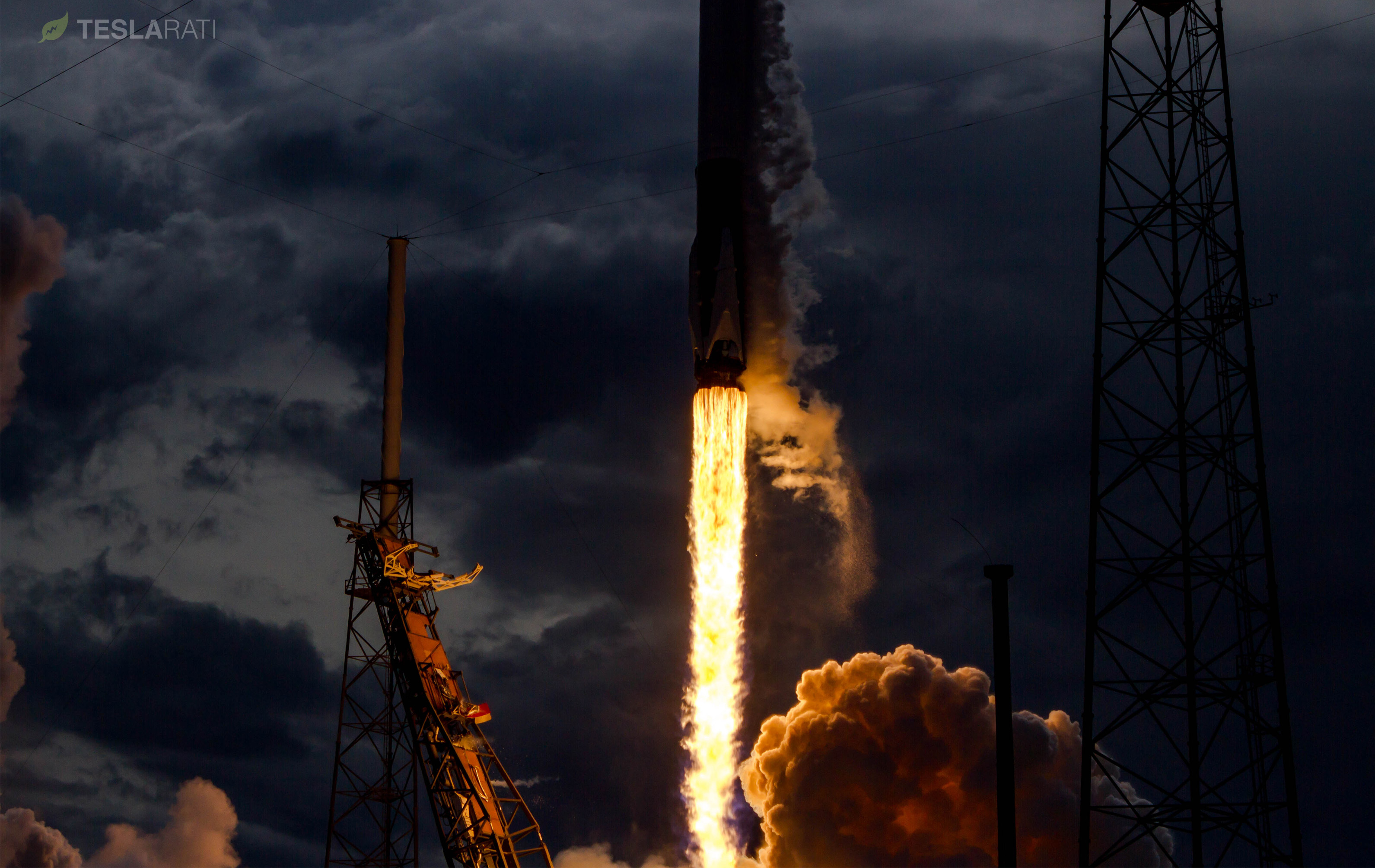

News
SpaceX urges Congress to expedite commercial spaceflight regulation reforms
Speaking in a Congressional hearing on the morning of June 26th, SpaceX Director of Government Affairs Caryn Schenewerk reaffirmed the company’s commitment to conducting “more than 25 [launches]” in 2018, a feat that will require a ~50% increase in launch frequency over the second half of the year.
Related to the focus of this particular hearing, namely regulatory reform, Representative Rick Larsen (WA-2) appeared to speak for everyone when he mirrored the four panelists’ sense of urgency for beginning the process of reforming federal space launch regulations by asking for an informal meeting outside the doors of the chamber once the session concluded, stating that “it’s that urgent.” In order for companies like SpaceX (and eventually Blue Origin) to be able to sustainably and reliably reach cadences of one launch per week in the near future, the currently cumbersome and dated launch licensing apparatus will almost invariably require significant reforms.
Pressure to remove artificial bottlenecks growing
Two primary problems were identified by the Air Line Pilots Association (ALPA), ULA, Blue Origin, and SpaceX officials present before the Congressional committee: the extreme sluggishness of licensing and the similarly obtuse brute-force integration of launch vehicle operations with the federal systems of air traffic control tasked with safely orchestrating tens of thousands of aircraft flights daily.
Whereas nominal orbital rocket launches result in vehicles like SpaceX’s Falcon 9 spending less than 90 seconds of real time within the bounds of that controlled airspace, the massive and disruptive “keep-out zones” currently required by the FAA for rocket launches frequently disrupt air traffic for more than 100 times as long. According to Ms. Schenewerk, SpaceX believes it already possesses the capabilities to integrate live Falcon 9 and Heavy telemetry with air traffic control, allowing those keep out zones to be dramatically compressed and highly responsive to actual launch operations, similar to how aircraft traffic is dealt with today.
- Falcon 9 1046’s Block 5 upper stage shown on its May 11 debut launch with Bangabandhu-1. SpaceX’s rockets already provide rich telemetry live to the company’s launch controllers. (SpaceX)
- After CRS-15, all orbital launches will be use Block 5 boosters and upper stages. The upgraded rocket’s next launch is NET July 20. (Tom Cross)
On the specific launch licensing side of this regulatory coin, SpaceX, Blue Origin, and ULA all expressed distaste for current standards, in which a worst-case scenario could see a launch provider forced to wait more than 200 days (up to eight full months) from the moment of filing to a launch license grant. Worse, even slight adjustments to a granted launch license require launch providers to resubmit themselves to that 200+ day process, effectively making timely modifications undependable exceptions to the rule.
Old rules, new rockets
The real barrier to these common-sense regulatory reforms is quite simply the extraordinary sluggishness of the FAA and those tasked with updating its guidelines and regulatory structures. Rep. Larsen was not exaggerating when he stated that he foresaw Congress choosing to delay those reforms by another 5+ years if given the opportunity, and it was thus likely a relief for the panel of witnesses (PDF) to hear him agree that these reforms must be pursued with the utmost urgency. In its current state, the FAA’s launch licensing is liable to be utterly swamped by the imminent introduction of multiple new smallsat launch providers on top of the already lofty launch cadence ambitions of SpaceX, ULA, and Blue Origin, as well as Orbital ATK to a lesser extent.
With SpaceX leading the charge, the American launch industry is already a year or more into a true renaissance of American spaceflight, and the FAA is simply not equipped to handle it. If reforms can be completed with haste rarely seen in Congress, the federal government can at a minimum ensure that it does not become a wholly artificial and preventable bottleneck for that explosion of domestic spaceflight activity.
- SpaceX’s Demo Mission-1 Crew Dragon seen preparing for vacuum tests at a NASA-run facility, June 2018. (SpaceX)
- A Falcon 9 fairing during encapsulation, when a launch payload is sealed inside the fairing’s two halves. This small satellite is NASA’s TESS, launched in April 2018. (NASA)
- A combination of scientific satellites and five Iridium NEXT communications satellites preparing for launch in May 2018. (NASA)
- Telesat’s SSL-built Telstar 19V conducts testing in an anechoic chamber before launch, currently NET July 19. (SSL)
Speaking of that activity, SpaceX is scheduled to begin its H2 2018 manifest push with as many as six Falcon 9 launches (five with Block 5 boosters) over the next ~60 days. Barring an abrupt increase in rocket booster production speeds, sources have confirmed that those 2-3 summer months will likely also feature one of the first rapid Falcon 9 Block 5 reuses, potentially seeing one of SpaceX’s highly-reusable rockets complete two orbital launches in approximately one month (30-50 days). That will, of course, depend upon both customer agreeability and the availability of rockets and launch facilities, but the goal of a rapid Block 5 reuse before summer’s end still stands, at least for now.
Up next is CRS-15, which will see the last orbital Block 4 Falcon 9 launch a flight-proven Cargo Dragon to the ISS with several thousand pounds of supplies in tow, with liftoff scheduled for NET 5:42 am EDT, June 29.
Follow us for live updates, peeks behind the scenes, and photos from Teslarati’s East and West Coast photographers.
Teslarati – Instagram – Twitter
Tom Cross – Twitter
Pauline Acalin – Twitter
Eric Ralph – Twitter
Elon Musk
Tesla investors will be shocked by Jim Cramer’s latest assessment
Jim Cramer is now speaking positively about Tesla, especially in terms of its Robotaxi performance and its perception as a company.

Tesla investors will be shocked by analyst Jim Cramer’s latest assessment of the company.
When it comes to Tesla analysts, many of them are consistent. The bulls usually stay the bulls, and the bears usually stay the bears. The notable analysts on each side are Dan Ives and Adam Jonas for the bulls, and Gordon Johnson for the bears.
Jim Cramer is one analyst who does not necessarily fit this mold. Cramer, who hosts CNBC’s Mad Money, has switched his opinion on Tesla stock (NASDAQ: TSLA) many times.
He has been bullish, like he was when he said the stock was a “sleeping giant” two years ago, and he has been bearish, like he was when he said there was “nothing magnificent” about the company just a few months ago.
Now, he is back to being a bull.
Cramer’s comments were related to two key points: how NVIDIA CEO Jensen Huang describes Tesla after working closely with the Company through their transactions, and how it is not a car company, as well as the recent launch of the Robotaxi fleet.
Jensen Huang’s Tesla Narrative
Cramer says that the narrative on quarterly and annual deliveries is overblown, and those who continue to worry about Tesla’s performance on that metric are misled.
“It’s not a car company,” he said.
He went on to say that people like Huang speak highly of Tesla, and that should be enough to deter any true skepticism:
“I believe what Musk says cause Musk is working with Jensen and Jensen’s telling me what’s happening on the other side is pretty amazing.”
Tesla self-driving development gets huge compliment from NVIDIA CEO
Robotaxi Launch
Many media outlets are being extremely negative regarding the early rollout of Tesla’s Robotaxi platform in Austin, Texas.
There have been a handful of small issues, but nothing significant. Cramer says that humans make mistakes in vehicles too, yet, when Tesla’s test phase of the Robotaxi does it, it’s front page news and needs to be magnified.
He said:
“Look, I mean, drivers make mistakes all the time. Why should we hold Tesla to a standard where there can be no mistakes?”
It’s refreshing to hear Cramer speak logically about the Robotaxi fleet, as Tesla has taken every measure to ensure there are no mishaps. There are safety monitors in the passenger seat, and the area of travel is limited, confined to a small number of people.
Tesla is still improving and hopes to remove teleoperators and safety monitors slowly, as CEO Elon Musk said more freedom could be granted within one or two months.
News
Tesla launches ultra-fast V4 Superchargers in China for the first time
Tesla has V4 Superchargers rolling out in China for the first time.

Tesla already has nearly 12,000 Supercharger piles across mainland China. However, the company just initiated the rollout of the ultra-fast V4 Superchargers in China for the first time, bringing its quick-charging piles to the country for the first time since their launch last year.
The first batch of V4 Superchargers is now officially up and running in China, the company announced in a post on Chinese social media outlet Weibo today.
The company said in the post:
“The first batch of Tesla V4 Superchargers are online. Covering more service areas, high-speed charging is more convenient, and six-layer powerful protection such as rain and waterproof makes charging very safe. Simultaneously open to non-Tesla vehicles, and other brands of vehicles can also be charged. There are more than 70,000 Tesla Superchargers worldwide. The charging network layout covers 100% of the provincial capitals and municipalities in mainland China. More V4 Superchargers will be put into use across the country. Optimize the charging experience and improve energy replenishment efficiency. Tesla will accompany you to the mountains, rivers, lakes, and seas with pure electricity!”
The first V4 Superchargers Tesla installed in China are available in four cities across the country: Shanghai, Zhejiang, Gansu, and Chongqing.

Credit: Tesla China
Tesla has over 70,000 Superchargers worldwide. It is the most expansive and robust EV charging network in the world. It’s the main reason why so many companies have chosen to adopt Tesla’s charging connector in North America and Europe.
In China, some EVs can use Tesla Superchargers as well.
The V4 Supercharger is capable of charging vehicles at speeds of up to 325kW for vehicles in North America. This equates to over 1,000 miles per hour of charging.
Elon Musk
Elon Musk hints at when Tesla could reduce Safety Monitors from Robotaxi
Tesla could be reducing Safety Monitors from Robotaxi within ‘a month or two,’ CEO Elon Musk says.

Elon Musk hinted at when Tesla could begin reducing Safety Monitors from its Robotaxis. Safety Monitors are Tesla employees who sit in the front passenger seat during the driverless rides, and are there to ensure safety for occupants during the earliest rides.
Tesla launched its Robotaxi fleet in Austin last Sunday, and after eight days, videos and reviews from those who have ridden in the driverless vehicles have shown that the suite is safe, accurate, and well coordinated. However, there have been a few hiccups, but nothing that has put anyone’s safety in danger.
A vast majority — close to all of the rides — at least according to those who have ridden in the Robotaxi, have been performed without any real need for human intervention. We reported on what was the first intervention last week, as a Safety Monitor had to step in and stop the vehicle in a strange interaction with a UPS truck.
Watch the first true Tesla Robotaxi intervention by safety monitor
The Tesla and UPS delivery truck were going for the same street parking space, and the Tesla began to turn into it. The UPS driver parallel parked into the spot, which was much smaller than his truck. It seemed to be more of an instance of human error instead of the Robotaxi making the wrong move. This is something that the driverless cars will have to deal with because humans are aggressive and sometimes make moves they should not.
The Safety Monitors have not been too active in the vehicles. After all, we’ve only seen that single instance of an intervention. There was also an issue with the sun, when the Tesla braked abnormally due to the glare, but this was an instance where the car handled the scenario and proceeded normally.
With the Robotaxi fleet operating impressively, some are wondering when Tesla will begin scaling back both the Safety Monitors and Teleoperators that it is using to ensure safety with these early rides.
CEO Elon Musk answered the inquiry by stating, “As soon as we feel it is safe to do so. Probably within a month or two.”
As soon as we feel it is safe to do so.
Probably within a month or two. We continue to improve the Tesla AI with each mile driven.
— Elon Musk (@elonmusk) June 30, 2025
Musk’s response seems to confirm that there will be fewer Teleoperators and Safety Monitors in the coming months, but there will still be some within the fleet to ensure safety. Eventually, that number will get to zero.
Reaching a point where Tesla’s Robotaxi is driverless will be another significant milestone for the company and its path to fully autonomous ride-sharing.
Eventually, Tesla will roll out these capabilities to consumer-owned vehicles, offering them a path to generate revenue as their car operates autonomously and completes rides.
For now, Tesla is focusing on perfecting the area of Austin where it is currently offering driverless rides for just $4.20 to a small group of people.
-

 News5 days ago
News5 days agoTesla Robotaxi’s biggest challenge seems to be this one thing
-

 News2 weeks ago
News2 weeks agoTesla confirms massive hardware change for autonomy improvement
-

 Elon Musk2 weeks ago
Elon Musk2 weeks agoElon Musk slams Bloomberg’s shocking xAI cash burn claims
-

 News2 weeks ago
News2 weeks agoTesla China roars back with highest vehicle registrations this Q2 so far
-

 News2 weeks ago
News2 weeks agoTesla features used to flunk 16-year-old’s driver license test
-

 News2 weeks ago
News2 weeks agoTexas lawmakers urge Tesla to delay Austin robotaxi launch to September
-

 News2 weeks ago
News2 weeks agoTesla dominates Cars.com’s Made in America Index with clean sweep
-

 News2 weeks ago
News2 weeks agoTesla’s Grok integration will be more realistic with this cool feature

